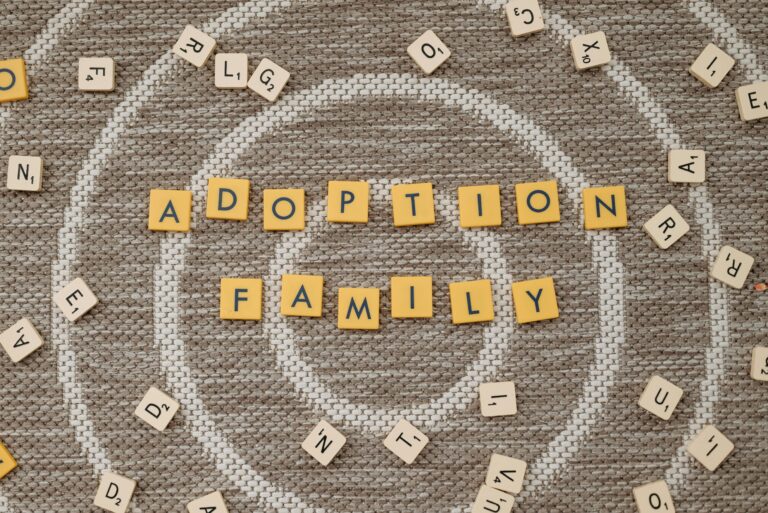I never dreamed it would be so hard to become a mom. Before my husband and I even started trying to get pregnant, we had extensive discussions with my doctor and specialists. One of my specialists even referred me to a pregnancy advisory specialist for a pre-pregnancy risk assessment. I stopped taking medications that could pose a risk to a baby in utero. I worked out regularly. Yet, a few months after we started trying to get pregnant, all of the build-up and excitement of becoming parents began to be overshadowed by my consistently increasing levels of pain and fatigue. Not only was I struggling with chronic pain, but each unwelcomed menstrual cycle was a painful reminder that we weren’t any closer to become parents.
At one of my numerous appointments, my rheumatologist finally recommended a different pain medication called Lyrica. My doctor knew I had stopped my pain medications to get pregnant – not that the medications had offered much pain relief – but she could see how much my chronic pain was negatively impacting my daily life. I was given strict instructions in the event of pregnancy to inform my doctor immediately so we could discuss pain management for the duration of my high-risk pregnancy.
A few months later at the medication follow-up appointment, I was eager to tell my doctor that my quality of life had drastically improved and my pain levels had decreased to a tolerable level. Upon hearing how well Lyrica had helped, she changed the diagnosis given by my previous rheumatologist from Lupus to chronic and widespread nerve pain (central sensitization). After experiencing how big of a difference Lyrica had made, we were forced to consider the risk of continuing Lyrica if we kept trying to conceive. It didn’t take much discussion for me and my husband to decide we would stop trying to get pregnant and pursue adoption instead.
We excitedly started researching the adoption process and the many different types of adoption. The first step towards adopting is to have a social worker complete a home study stating you are fit to be parents and can provide a safe home for a child. The home study process is comprised of paperwork/forms, background checks, and visits where the social worker comes to your home to do a basic inspection to ensure the home is safe and discuss adoption and parenting with the couple.
One particular form was to be completed by our primary care doctors. The form would list any health issues, and what we were doing to manage the issue(s). While my husband’s doctor had nothing noteworthy on his form, my doctor and each of my specialists filled out their own copy of the form explaining which of my diagnoses they specifically treated and what methods of treatment were prescribed. All of my doctors were more than willing to fill out the form and endorse me as an adoptive mom. Due to my complicated medical history, my doctors even expressed relief when we decided to adopt. They had confidence in my ability to be a mom, but they didn’t have confidence in my body being able to get pregnant and/or handling pregnancy and delivery well.
After turning in the completed paperwork, the time came for the social worker to come visit us in our home. Like any hopeful adoptive couple, my husband and I were nervous about our home study visit. We had worked hard to clean our house, but we were also unsure if my medical forms/health would cause any concerns for the social worker or the adoption agency. When talking to the social worker about my health, we were relieved to find out that many hopeful adoptive couples have health issues. The medical portion of the home study paperwork was to inform the adoption agency of the couple’s health status and if their health could potentially impact their ability to parent.
Despite my chronic health issues, my husband and I felt confident in our ability to parent. I had a good relationship with my doctors, and I was taking medication and attending physical therapy for the chronic pain. We also planned on putting our child in an in-home daycare one to two days a week to help offset my fatigue. After our home visit, our social worker was pleased with everything and recommended us as hopeful parents to the adoption agency.
The next step was completing the adoption agency application, which required even lengthier paperwork and forms. One specific form was the acceptance questionnaire: a set of questions to help determine the best adoption situations/opportunities for a hopeful adoptive couple. The answers to these questions help match the hopeful adoptive couple with a pregnant mom who might be interested in them to raise her child. The acceptance questionnaire covers the hopeful adoptive parents’ preferences in the pregnant mom’s (and father’s if he is known) medical history (taking into consideration how any known medical conditions may/may not impact your child), race, budget, post-adoption contact with birth parents, and substance abuse during pregnancy. Once the hopeful adoptive couple’s adoption agency application is approved, they become a “waiting family”.
Once we became a waiting family, I began to obsessively check my phone to see if the adoption agency had sent an email with an adoption situation. Each situation email included the pregnant mom’s medical and social histories, as well as the father’s (if he is known), and all potential expenses that might drive the total adoption cost up, for example: medical costs the adoptive parents would be responsible for if the pregnant mom didn’t have medical insurance, as well as any financial assistance for nutrition and safe housing the pregnant mom needed for the rest of her pregnancy. Based on all of the information given, we then decided if we wanted to have our adoptive parent profile given to the pregnant mom to consider us as parents for her child. Finally, the pregnant mom would choose a hopeful adoptive couple to adopt her child after delivery.
A lot happened during the nine months we were waiting to match with a pregnant mom – we were presented with 30 adoption situations (12 of which we chose to have our profiles presented to the pregnant mom), my husband went on two short deployments, and the COVID pandemic had turned the world upside down. By the time COVID hit, we had been stationed overseas in England for a few years. We had plans in place if we were presented with an immediate adoption situation where a baby was already born or was about to be born while my husband was deployed. We also had to plan how to even make it back to the States as travel (especially international) had majorly been impacted.
In the summer of 2020, we received a call late one night telling us a pregnant mom had chosen us! After a couple of weeks packing our bags and as researching COVID requirements for traveling internationally, we put on our masks and flew back to the States.
On the morning of the delivery date, my husband and I were so excited when we got a text from the adoption agency letting us know the mom had given birth to a baby girl and delivery had gone well. They also let us know the baby would be in the NICU for a few days as a precautionary measure due to a C-section and gestational diabetes.
While the hospital was amazing to allow my husband and me to stay in an empty hospital room down the hall from the NICU, visitation rules during the pandemic only allowed two people total per baby to be listed as visitors. As the biological mom couldn’t sign over her rights as a parent for the first 48-hours due to state adoption laws, she was the one to decide on the two people who would be listed as visitors. I will always feel honored and grateful she chose me to be the second visitor.
Since my husband and I were staying down the hall, I could easily pop down to the NICU every few hours to hold, feed, rock, and bathe this precious baby. For the first two days of this little one’s life, she wasn’t “ours” as she still legally belonged to her biological mom. So, during those quiet moments when I would hold, feed, and rock this mom’s baby in the NICU, it only felt right to call her “Sweet Girl”.
Once the biological mom signed her rights over, it then allowed my husband and me to be listed as this baby’s parents. It also meant my husband would be listed as the other visitor allowed into the NICU, and he could finally hold our little girl.
I never would have dreamed this would be my path to becoming a mom, but after our incredible daughter entered our lives, I can’t imagine it happening any other way.

